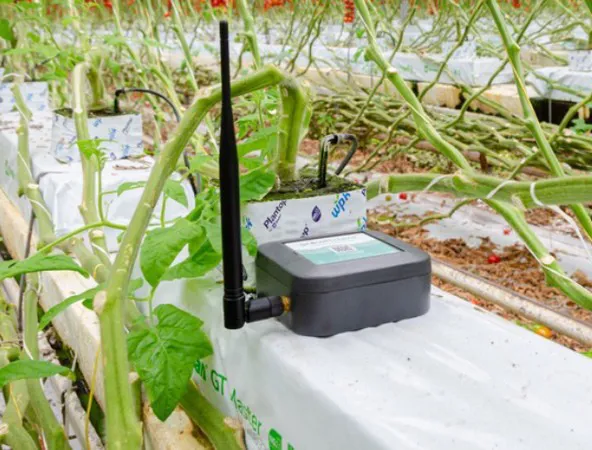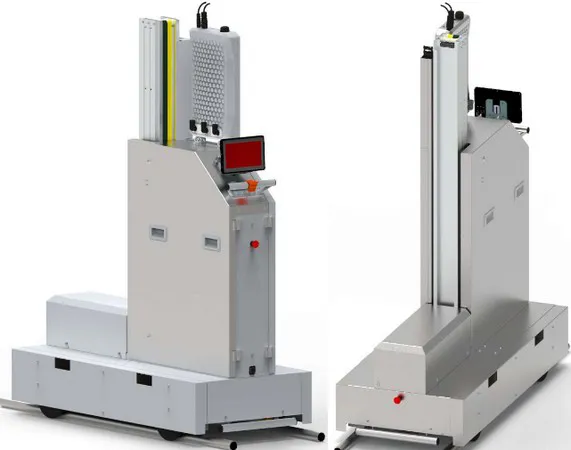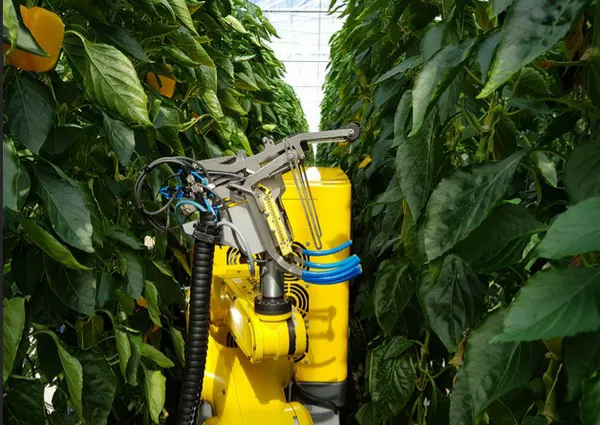The Network Smart Horticulture saw the light in 2018. Since then, the robot builders have been committed to accelerating innovation in horticulture. Almost thirty companies have already joined.
Now they want to take the next steps. That is why on 11 May an online meeting was held under the leadership of Stephanie Riffo and Irma Oosterom-van Roest van Berenschot on the theme of robotics in the autonomous greenhouse. Several companies were given the opportunity to talk about their robotics solutions. Common denominator? Everyone has to and wants to take the next steps.

Growficient works with growers towards autonomous irrigation
Confirming a gut feeling
For example, Dirk Jan Mulder of Growficient was given the opportunity to introduce himself. He develops sensors and a platform to monitor and optimize irrigation for growers. After a good year, the foundation is in place and with five large soft fruit growers they will take the first steps towards autonomous irrigation, which will be based on plant needs. The first connection with a climate computer has also already been realized.
Dirk Jan said that growers are mainly attracted to the peace and security that the platform now gives them. In addition, the growers also have a gut feeling about how much they think they can save on irrigation and/or how they expect to gain added value from optimizing the irrigation. This is, for example, said Dirk Jan, because growers are currently still occupied with continuously responding to weather forecasts or measuring, but, for example, only with 12 plants on a scale for an entire greenhouse full of tomatoes. Strawberry growers expect to be able to increase their yield by up to ten percent by using the system to control plant needs.

Metazet FormFlex deliberately developed a 'simple trolley' together with Micothon
Purposefully simple "trolley"
Dolf van der Hoeven of Metazet FormFlex was already further ahead in that respect. He was allowed to talk about the autonomous driving trolley that the company developed. Deliberately "a trolley", because the technology is not yet "so smart" that it can be called a robot, according to Dolf. However, the techniques that are used are tested and reliable, he said, making the trolley "an ideal basis to supplement with, for example, cameras, sensors or robotic arms".
Metazet consciously chose FormFlex, which developed the trolley together with Micothon, to keep it "simple". As a result, the trolley can now drive autonomously through the greenhouse and move itself well from pipe rail to pipe rail, also over the concrete path.
The first series of trolleys has already been made and many test kilometers have been driven. It is expected that they will soon be conducting research into the application of UV-C light on the cart to automatically disinfect the crop in the greenhouse.

Photo of a field trial with the Sweeper in July 2018
Harvest robot support
The Sweeper pepper harvesting robot from Wageningen University & Research has also been driving through the greenhouse. The project that has been underway for years provided the necessary useful knowledge and information about problems and challenges. For example, the robot in the pepper crop was still harrowed by how the crop grows. 'Finding' the fruits between the leaves is not easy, even for the smart systems with which the robot is equipped.
Jos Balendonck of WUR said that the robot will not (for the time being) be able to pick 100% autonomously in the greenhouse under the current conditions. There are, however, opportunities to use the robot as extra support for the pickers in the greenhouse. This involves looking for an economically profitable application. That will not be the case if the robot picks 90% of the peppers, because then people still have to look for the other percentages. Conversely, a robot that only picks 10% is also not good enough.
As an example of a potentially profitable combination, Jos gave a "simplified version" of the Sweeper that picks 25% of the peppers in a two-stem system and then has the rest picked by humans. Or the same robot with an upgrade that picks 50% of the fruits and then the rest by humans. At the moment, however, a variety with less leaves and less fruit clustering is still required.
Acceleration
In addition to the above-mentioned speakers, Colinda de Beer from InnovationQuarter spoke about RoboCrops. This program, set up by various parties in the sector, is aimed at accelerating the development and application of robotics in greenhouse horticulture. This concerns more than just the technology, but also how people work with the robots and new revenue models.
The Netwerk Smart Horticulture also wants to take steps in collaboration in projects. In July Netwerk Smart Horticulture hopes to reunite with even more members. The central theme is: The greenhouse as an energy source.
For more information:
Netwerk Smart Horticulture 
www.netwerksmarthorticulture.nl
Irma Oosterom-van Roest
i.oosterom-vanroest@berenschot.nl
+31 6 2391 67 51
Stephanie Riffo
s.riffo@berenschot.nl
+31 6 29 39 30 04
